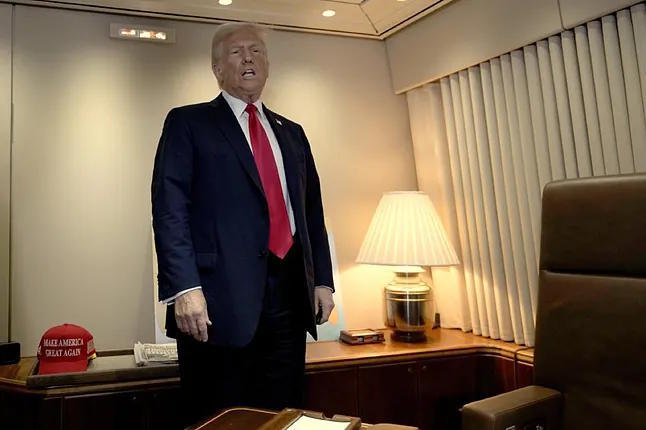Donald Trump's protectionism is starting to target the European Union. The U.S. president has announced a 25% tariff on the export of steel and aluminum, two chapters that directly affect the European Union and, within it, Spain. The tariffs would be in addition to the 25% on steel and 10% on aluminum that Trump already imposed in 2018 and, although they have been lifted in specific cases, they still remain as the Biden administration did not lift them.
With tariffs of 50% - for steel - and 35% - for aluminum - it would be virtually impossible to export those products to the U.S. This would be a problem especially for that country, given that there are types of steel and aluminum that it does not produce, so it would have, once again, to create exceptions to its own rules, apart from favoring sectors close to Trump or that the president wants to grow, such as the oil industry.
He has also stated that he will announce new "reciprocal" tariffs against countries that, according to him, impose excessive taxes on U.S. imports.
Although the U.S. president has not provided details on which economies could be affected by these measures, the EU seems to be one of the strongest candidates, especially considering Trump's lack of affection for multilateral political and economic integration systems based on the adoption of common rules by different governments, as opposed to the more basic principle of the law of the jungle - that the strong eat the weak - which the U.S. president seems to prefer.
However, as always with Trump, what happens in public is one thing and what happens in reality is very different. The president promised the steel and aluminum tariffs on his way back to the White House from New Orleans, where he had attended the Super Bowl, the final of the U.S. football season. Since then, however, he has not done or said anything else. No one knows when they will take effect or if there will be exceptions. The same goes for the "reciprocal tariffs," a term that no one, with the possible exception of Donald Trump, really knows what it means, but which could involve issues like the Spanish 'digital tax'. Trump has justified these measures with a new example of manipulation, claiming that the U.S. public debt, which exceeds 100% of GDP and continues to grow, is due to the country's imports, which is more of a nonsense than an argument.
For this reason, Wall Street has ignored his threats. Investors, especially in the stock market, are confused by Trump's trade policy, which consists of threatening with apocalyptic tariffs and then postponing their implementation, claiming that his trading partners have agreed to his concessions. But in reality, this has not happened, as Canada and Mexico, the two countries affected by this dynamic, have not changed their immigration and border policies, and have only announced plans that they had already decided on so that the U.S. president can boast to his electorate of having achieved a victory.
Trump has only imposed tariffs on China, at 10%, which took effect on the 4th of this month. However, on the same day, the U.S. decided to not eliminate, after a few hours of implementation, the elimination of the so-called 'de minimis' rule, which eliminates tariffs on all imports made by individuals of packages valued at less than $800, and which has been crucial for the entry of Chinese online retail giants, such as Shein and Temu, into the U.S. Yesterday, China's new retaliatory tariffs against the U.S. came into effect.
In any case, what is at stake is global trade. And also, the position of the U.S. as the leading global power, as evidenced by the decision of the Canadian pipeline company Trans Mountain to increase by 300,000 barrels per day the capacity of its pipelines leading to Pacific ports connecting with China, in anticipation of a closure of the U.S. market.
For now, the U.S. president is mainly targeting his allies with his tariffs - whether real or fictitious. Mexico and Canada are the first and second largest trading partners of the United States. These two countries are also the two largest steel suppliers to the U.S. and the first and third in aluminum. Spain would also be affected, as last year it exported ¤385 million in steel and aluminum to the U.S.. As bad news never comes alone, a U.S. court ruled yesterday that Spanish wind energy companies Siemens Gamesa and Windar have been engaging in 'dumping', so they will have to pay a 29% tariff.
